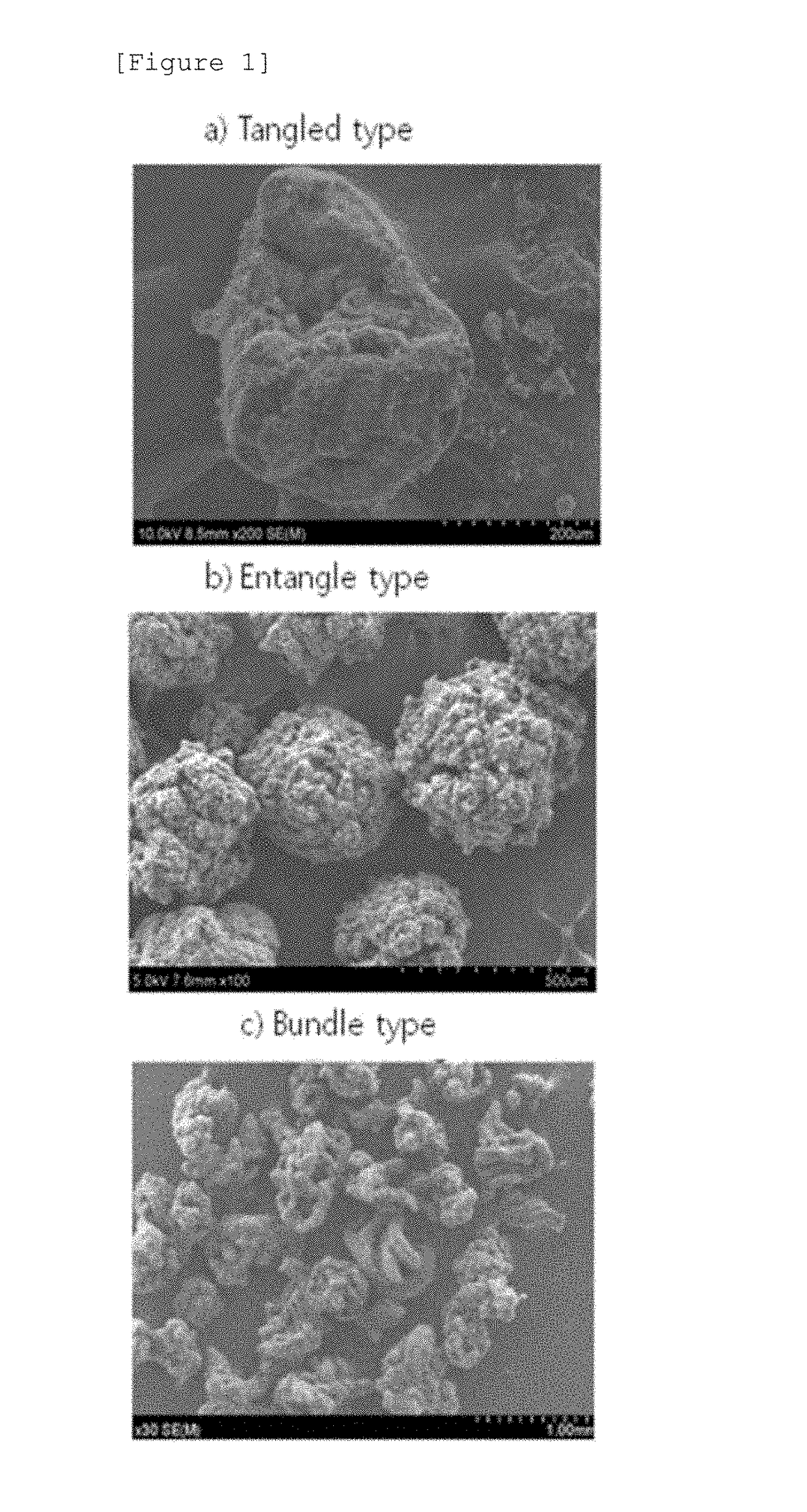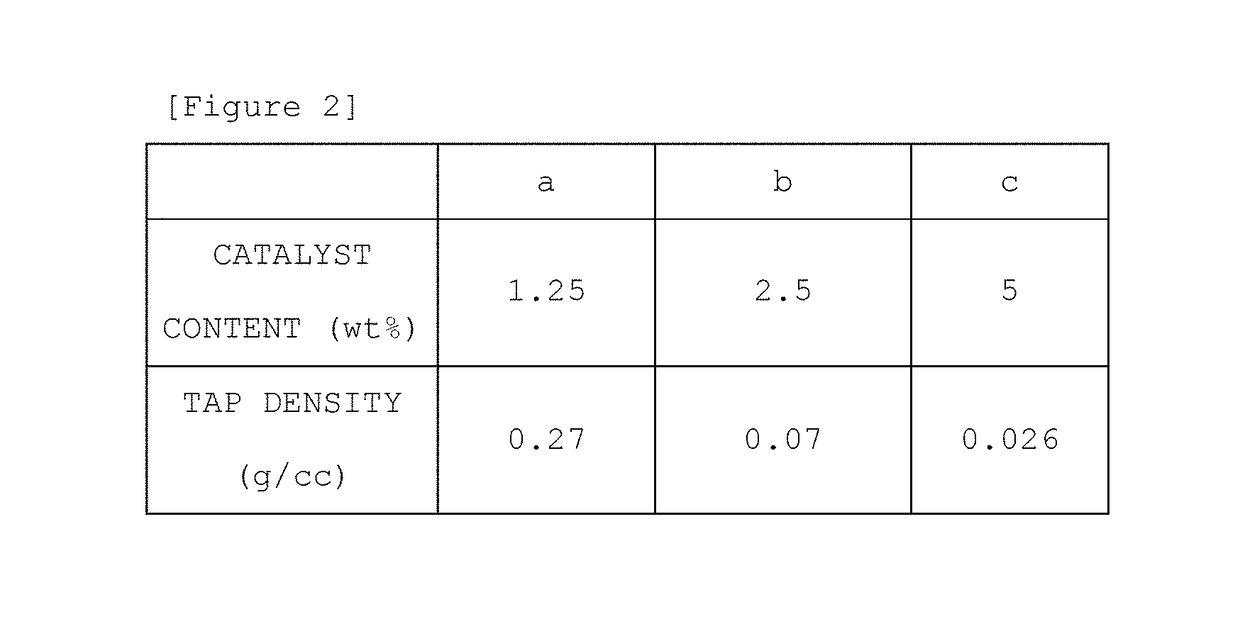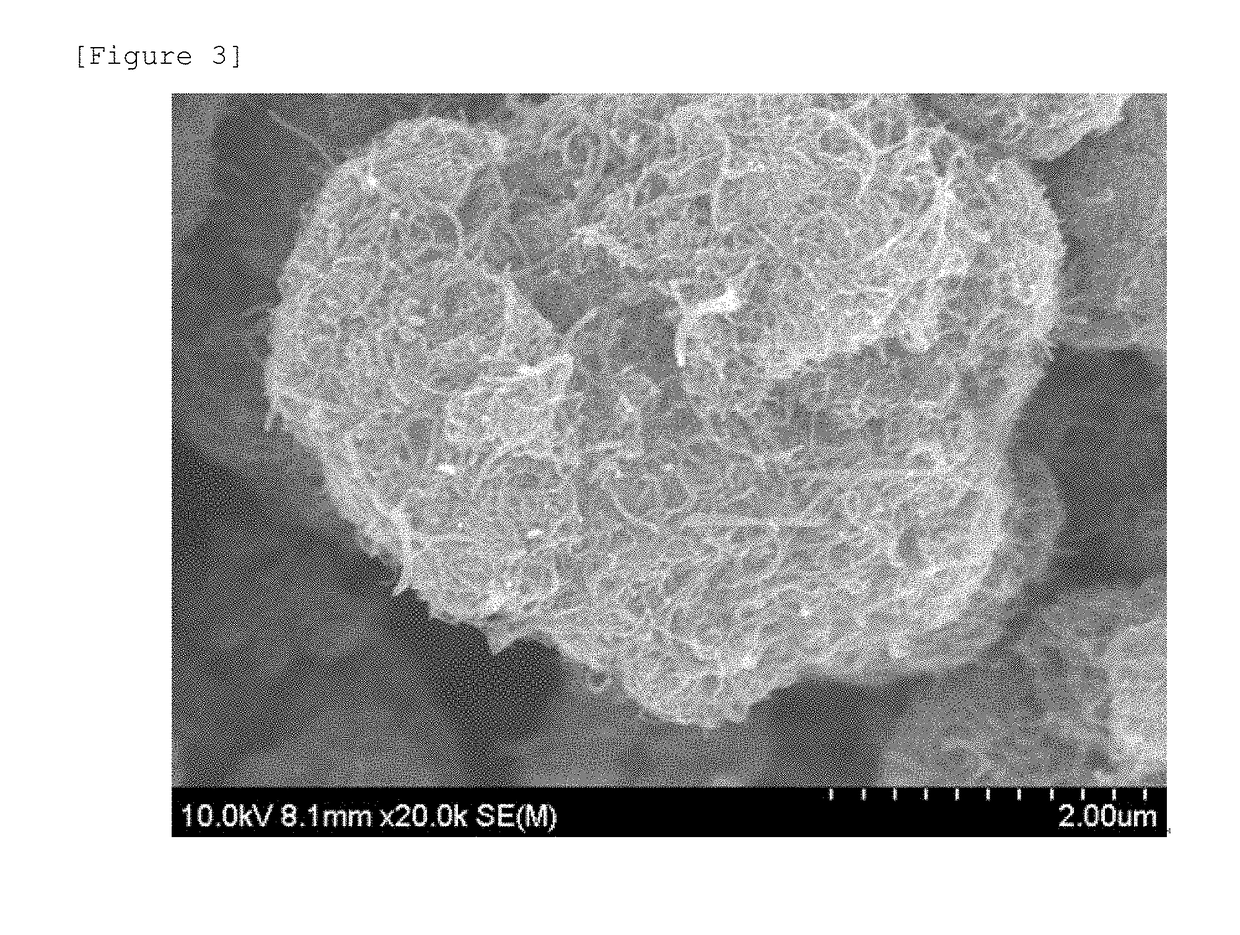Carbon nanotube-sulfur composite comprising carbon nanotube aggregates, and method for preparing same
a carbon nanotube aggregate and carbon nanotube technology, which is applied in the direction of sustainable manufacturing/processing, cell components, batteries, etc., can solve the problems of difficult to move electrons generated by electrochemical reactions, and achieve the effects of improving the capacity of an electrode, improving the electrical conductivity, and improving the performance of a battery
- Summary
- Abstract
- Description
- Claims
- Application Information
AI Technical Summary
Benefits of technology
Problems solved by technology
Method used
Image
Examples
example 1
[0120]The carbon nanotube-sulfur composite prepared in Preparation Example 2 was used as the positive electrode active material, Denka black was used as the conductive material, and SBR (styrene butadiene rubber) and CMC (carboxymethyl cellulose) were added as the binder to prepare the positive electrode slurry. In this case, the composite, the conductive material, and the binder were mixed at the content ratio of 75:0:5 wt % to prepare the positive electrode slurry, and the slurry was applied so that the sulfur content in the electrode was 3 mAh / cm2 to manufacture the positive electrode.
[0121]The lithium metal foil was used as the negative electrode, and the polypropylene sheet was used as the separation membrane. As the electrolytic solution, 0.1 M LiTFSI salt (lithium bis-(trifluoromethane sulfonyl)imide salt) was added to the solvent where tetraethyleneglycol dimethyl ether, 1,2-dimethoxyethane, and 1,2-dioxane were mixed at the ratio of 1:1:1 to manufacture the battery.
example 2
[0122]The lithium-sulfur battery was manufactured by performing the same method as Example 1, except that the carbon nanotube-sulfur composite used in Example 1 was used as the carbon nanotube-sulfur composite prepared in Preparation Example 3.
experimental example 1
[0124]The initial charging / discharging capacity of the battery manufactured in Example 1, Example 2, and Comparative Example 1 was measured. Charging and discharging c-rates were 0.1 c, measurement was performed at room temperature, and FIG. 8 illustrates measurement values. Discharging capacities were compared while adjusting the sulfur content in the electrode to 3 mAh / cm2.
[0125]Hereinafter, a description will be given with reference to the drawings.
[0126]FIGS. 3 and 4 are images obtained by photographing the carbon nanotube aggregate by a scanning electron microscope (SEM).
[0127]FIG. 5 is a photographed image of a carbon nanotube-sulfur composite having a shape of FIG. 1-a) obtained by a scanning electron microscope (SEM) and an energy dispersive spectroscopy (EDS).
[0128]Specifically, FIG. 5a) illustrates the SEM images of the initial carbon nanotube aggregate (left) and carbon nanotube-sulfur composite (right) before the composite having the size of about 500 micrometers is form...
PUM
| Property | Measurement | Unit |
|---|---|---|
| tap density | aaaaa | aaaaa |
| tap density | aaaaa | aaaaa |
| porosity | aaaaa | aaaaa |
Abstract
Description
Claims
Application Information
 Login to View More
Login to View More - R&D
- Intellectual Property
- Life Sciences
- Materials
- Tech Scout
- Unparalleled Data Quality
- Higher Quality Content
- 60% Fewer Hallucinations
Browse by: Latest US Patents, China's latest patents, Technical Efficacy Thesaurus, Application Domain, Technology Topic, Popular Technical Reports.
© 2025 PatSnap. All rights reserved.Legal|Privacy policy|Modern Slavery Act Transparency Statement|Sitemap|About US| Contact US: help@patsnap.com



